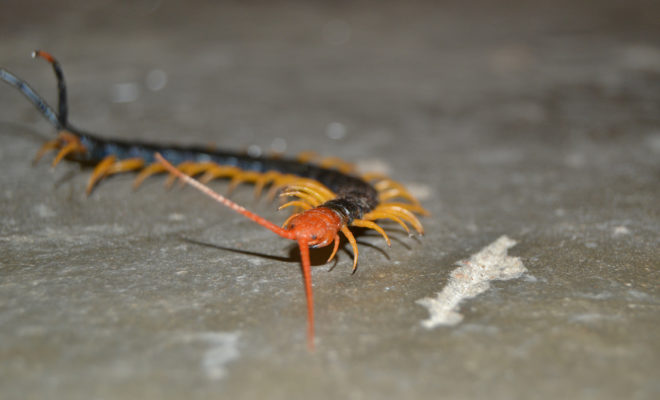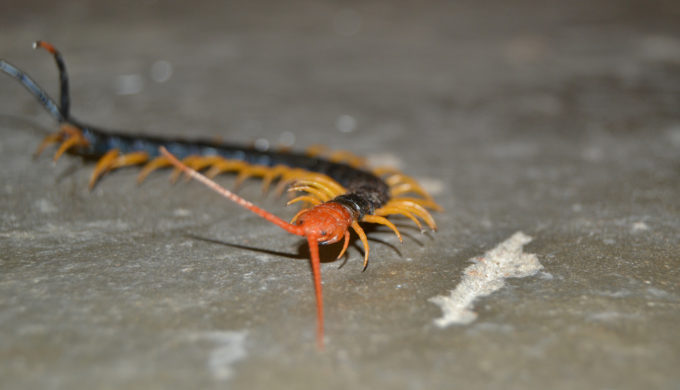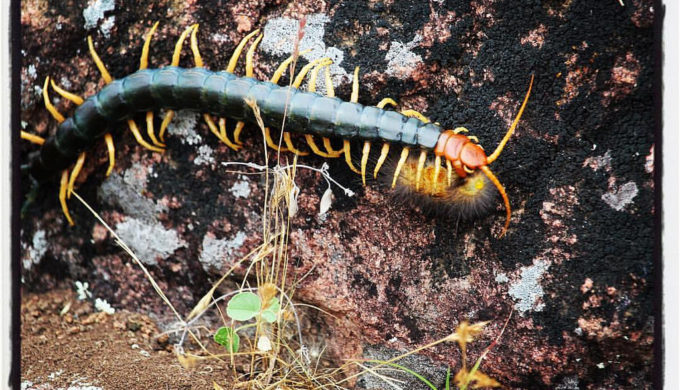When you visit the Texas Hill Country, there are a few critters that you can expect to run into. Among these are scorpions, spiders, and possibly even snakes. But there’s one particularly horrifying creature that no one seems to warn you about: Texas red-headed centipedes.
The Texas red-headed centipede is known by several different names, among them: The Giant Desert Centipede; by its scientific name, Scolopendra Heros, and also by a few very inappropriate names that are commonly shouted when one encounters a Texas centipede for the first time.
Texas centipedes are very large, averaging about 6.5 inches long but can get as large as 9 to 12 inches long. They also elicit a fear response like no other Hill Country critter. Here are three more facts about these many-legged creepers that you probably didn’t want to know:
Photo: Flickr/Frank Boston
Creepy appearances aside, the Texas red-headed centipede is also venomous, but not deadly. “As far as invertebrates go, the giant redheaded centipede is one bad dude,” Ben Hutchins with the Texas Parks and Wildlife Department says. “Bites are usually rather mild, resulting in a sharp, painful sting that is sometimes accompanied by swelling, usually subsiding after a few hours.” Consider centipede bites to be similar to bee stings: usually mild, but occasionally resulting in acute reactions. In rarer cases, bites cause minor skin necrosis, dizziness, nausea, and headaches.
There are legends that tell of Texas centipedes killing small children and even adults. Aside from a few reported heart attacks that have occurred as a result of encountering one of these giant centipedes, there are no records of deaths related to the sting of the creature.
2. They’ve got a large appetite.
Photo:
Flickr/Michael brown
Centipedes feed on lizards, toads, snakes, and sometimes even rodents. In fact, the South American cousin to our centipedes, called the Amazonian centipede, has been witnessed snatching bats right out of the air! “They use their legs to grasp prey while feeding and their ‘fangs’ (actually an additional pair of highly modified legs) are capable of piercing the skin and injecting a painful toxin,” Hutchins said. Luckily, they’re not interested in human flesh, but they will sting in defense if they’re handled by humans.
Page 1 of 2:12Next Page »





